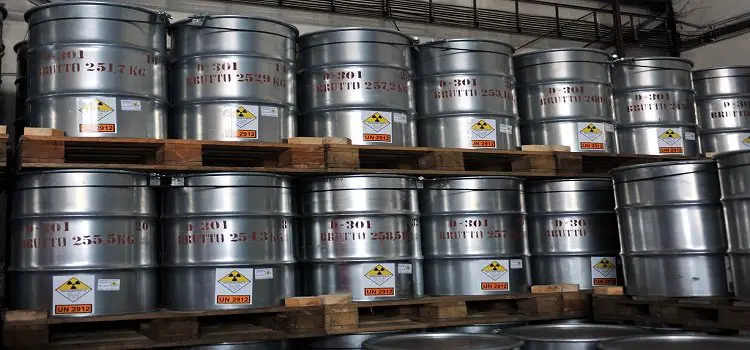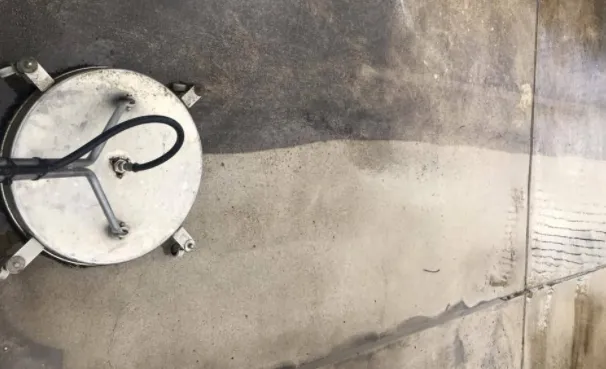Gasoline remains intact without any deterioration of its structure for up to 8 weeks. After that, it starts becoming a bad gas with time and troubles the engine. Yet, you can use this old gas if you know how to recondition old gasoline.
For our gas pressure washer, chainsaws, gas-operated string trimmers, and other vehicles including cars, we need to use gasoline regularly. As a consumer, it is natural that sometimes we forget to use gasoline within the time-frame. Moreover, sometimes we buy more than our needs. As a result, we may have a considerable amount of gasoline left over. In most cases, this unused gas fails to run any sort of engine.
Reconditioning old gasoline wouldn’t bring that much profit if you have a little amount of gas. But, if you have a handsome amount of gas, you should recondition it. There are several ways of refurbishing old gas. But, the job is dangerous as the gasoline is highly flammable. In this article, we are going to discuss the safest ways.

Consideration for Reconditioning Old Gasoline
Some key factors determine whether you should recondition the bad/old gas. It is wiser to calculate the feasibility first before we start reconditioning. Below are some factors that you should know:
- The first factor is the quantity of gasoline. You need to have the minimum amount of gasoline for reconditioning. Not because that you can’t recondition a small quantity but because the small quantity isn’t worth it.
- The second factor is the age of gasoline. You need should go for gasoline which is aged over 8 weeks and below 2 years. Below 8-week aged gas needs no rectification unless it is too much contaminated. Over 2-years aged gas can be reconditioned but its effectiveness won’t be acceptable.
- Another important factor is the contaminating substance. Any gasoline contaminated with antifreeze, brake fluid, carburetor fluid, or other heavy-lubricates cannot be reconditioned.
- When phase separation reaches its second half phase, it becomes difficult to recondition the gas. Moreover, if we still try to recondition this gas, it would cost us double the price of buying new gas! So, you need to understand what is phase separation and how it happens.
- In 95% of cases, we need to use the stabilizer/additive to recondition the old gas. Unfortunately, some of the manufacturers strictly forbid using the additive with their products. So, you need to follow the owner manual of the unit for which you will use the reconditioned gas.
- You cannot use the reconditioned gas with an engine that has a fuel injection system!
Steps of Reconditioning Old Gas
Any gasoline can be out of working conditions due to three major causes. All of the causes along with their solutions are discussed below. We will be discussing those maintaining the sequence in a convenient order. So, here you are getting 3 steps of reconditioning old gas. Each step has a specific problem and solution related to the bad/outdated gas.
Step-1: Problem in the Formation of the Gasoline
The most common problem with gasoline happens to its formation. The older the gasoline, the greater the possibility of having this problem. Over time, gasoline becomes bad due to deposits and gum derives from oxidation. Any sort of particles that work as deposits creates a layer on the gasoline.
Furthermore, due to intense oxidation, the gasoline gathers unwanted gum. These deposits or gum make a change in the formation of gasoline. Thus, gasoline becomes heavier and gets severe obstacles to burn. To recondition the gasoline suffering from this problem, follow the solution below.
Solution: The most common and easiest solution to the abovementioned problem is filtration. With the help of filtration, we can remove the deposits and gums from the gas. To do that, you have to use a fresh rug, funnel, and a metallic pot. Place the rug on the top of the funnel. Place the funnel onto the metallic pot/cylinder.
Once you pour down the old gasoline onto the rug, the rug will filter almost 95% of all the deposits and gums. Now, you have to pump the gas with the help of a standard fuel filter.
Last update on 2024-02-26 / Affiliate links / Images from Amazon Product Advertising API
Step-2: Problem Caused By Water Absorption
Another reason that makes the old gasoline bad is water absorption. Over time the old gasoline absorbs water vapor. The vapor contaminates the fuel. Water destabilizes the combustion chamber and forces the engine to shut down. To save the gasoline engine, the manufacturer makes the engine sensitive to water mixed fuel. So, the fuel which comes in contact with water fails to run the gasoline engine. To use this old gasoline, you have to remove the water/vapor from it. To do that, follow the simple step.
Solution: Use two air-tight metallic jars to refine the gasoline that is suffering from water/vapor. First of all, pour down the gasoline into one of the jars. Wait at least 20 minutes to settle down the mixture. In the meantime, water will reach the bottom of the jar, and gasoline will form the top of the jar. This happens as water is heavier than gasoline.
Now, take the gasoline out of the first jar to the second. Make sure to take the gasoline layer only. Leave the water layer to the first jar. To do that safely, you have to leave a little portion of the gasoline layer with the water in the first jar.
If you want to avoid this manual action, you have to use Gumout. Any standard Gumout does a fine job to clean the water/vapor/deposits from the fuel. All you need is to use the Gumout at the time of fuel change. The Gumout will take care of the fuel till the next time your fuel changes. Read the owner manual to use the Gumout properly.
Step-3: Problem with Fuel Layers
Gasoline is not the homogeneous form of hydrocarbon rather it is a mixed version. The mixer contains both light and heavy fuels. Sometimes, with time this light layer gets evaporated and it becomes difficult for the heavier layer to run the engine alone.
The heavier layer is formed by pure hydrocarbon whereas the lighter layer is formed by alcohol-like volatiles. With time, these layers start breaking down. This event is known as phase separation. You can recondition the old gas before it reaches the final phase.
Solution: At the time of phase separation, the volatiles starts evaporating rapidly. You have to recondition the gas before it loses all its volatiles. To do that, you have to add an additive or stabilizer. The additive works as the volatiles stabilizer or arrester. Moreover, it is safe to use the additive even with the new gasoline that you may store for a long time. So, it is clear that the additive plays an important role to stabilize the gas. PRI CP123 G gasoline stabilizer is the best additive we have used so far.
Popular Gasoline Additives
Last update on 2024-02-29 / Affiliate links / Images from Amazon Product Advertising API
Last update on 2024-02-26 / Affiliate links / Images from Amazon Product Advertising API
Pure gasoline is 1% butane that works as the volatiles. At the starting phase of the phase separation, this butane starts evaporating. Restoring the butane into the gasoline doesn’t take that much effort. Do not attempt to bubble butane rather use a butane light filter canister. Blazer Butane Refill is one of the popular canisters we have tested recently. Use the canister to refill butane or propane with any oil/fuel.
Hunter Tips on Old Gas Reconditioning
- You have to work in an open-air and with at least one helper with a fire extinguisher.
- In the time of mixing, mix one-part reconditioned gasoline with five parts of new gasoline. It will protect the engine.
- Remember, reconditioned gasoline cuts the mileage. So, you won’t get the mileage from this old gasoline that you get from new gas. Yet, it saves money!
- Try to use ethanol-free gas.
- Do not forget/hesitate to use recommended PRI-G dosages. Try to use it maintaining the prescribed schedule.
- Always keep/store the gasoline in a cool place in a metal jar. in gas to leak out.
Conclusion
Gasoline is the most common form of fuel that we use regularly. Most of the power tools and equipment need gasoline to run their engine. If we forget to use it timely or do not get the scope to use it within 8-weeks, the gasoline may go out of working condition. If the amount demands to be refurbished, you should go for it. Hopefully, today’s article on “how to recondition old gas” could help you do that properly.






